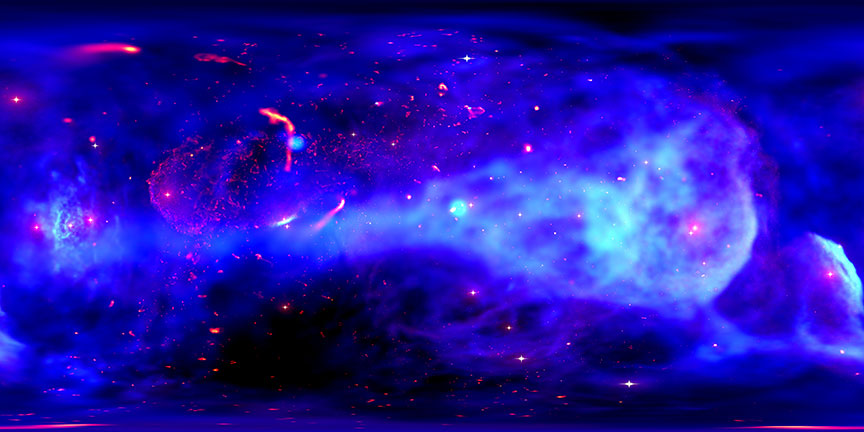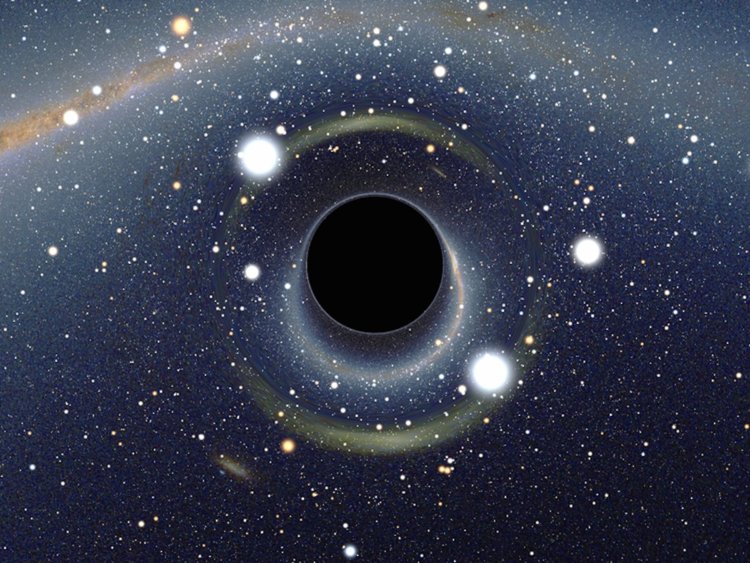
A recent UK study shows that there could be about 36 active communicating intelligent civilizations in our home Galaxy. This is an enormous advance over previous estimates which spanned from zero to billions.

A Milky Way magnetar called SGR 1935+2154 may have just massively contributed to solving the mystery of powerful deep-space radio signals that have vexed astronomers for years.

A new model suggests the Milky Way should have an additional 100 or so very faint satellite galaxies awaiting discovery.

Astronomers have found six objects orbiting Sagittarius A* that are unlike anything in the galaxy. These objects look like gas but behave like stars. They are so peculiar that they have been assigned a brand-new class - what astronomers are calling G objects.

Data obtained by VLT showed evidence of massive stars bursts billions of years ago in the galaxy’s center. The more recent burst was so intense that resulted in 100,000 supernova explosions. These findings are inconsistent with our notions that stars formed continuously in our galaxy.

A titanic, expanding beam of energy sprang from close to the supermassive black hole in the center of the Milky Way just 3.5 million years ago, sending a cone-shaped burst of radiation through both poles of the galaxy and out into deep space.

Observing Sagitarius A ( a supermassive balck hole in the center of our galaxy ) with the Keck's telescope, scientists just watched as its brightness bloomed to over 75 times normal for a few hours. Astronomers aren’t certain what caused the flaring.

This 360-movie offers an unparalleled opportunity to look around the center of the galaxy, from the vantage point of the central supermassive black hole, in any direction the user chooses.

Using ESA's Gaia spacecraft and NASA’s Hubble Space Telescope, astronomers have come up with the most accurate measurement yet of the Milky Way’s total mass. It contains about 1.5 trillion times the mass of Earth’s Sun.

The “quiet” black hole is located just 20 light years from the supermassive four-million-solar-mass black hole lurking at the centre of the Milky Way. In the future, it will fall into the supermassive black hole.

A duo of astronomers has spotted three new globular clusters in the Milky Way’s bulge, a 10,000-light-year-wide central structure made primarily of old stars, gas and dust.

More precisely, the Milky Way collided with the second galaxy, absorbing many of its stars and spiraling out a chaotic tangle of stellar matter — birthing new stars and altering the orbits of others.

According to the model of US researchers, the entire Milky Way (and even other galaxies) could be exchanging the components necessary for life.

For the first time, an international collaboration of scientists has detected highly energetic light coming from the outermost regions of an unusual star system within our own galaxy.

About 170 years ago, Eta Carinae erupted with a titanic blast becoming at one point the second brightest star in the night sky. Somehow, the star survived the “Great Eruption”, providing an intriguing mystery for astronomers.